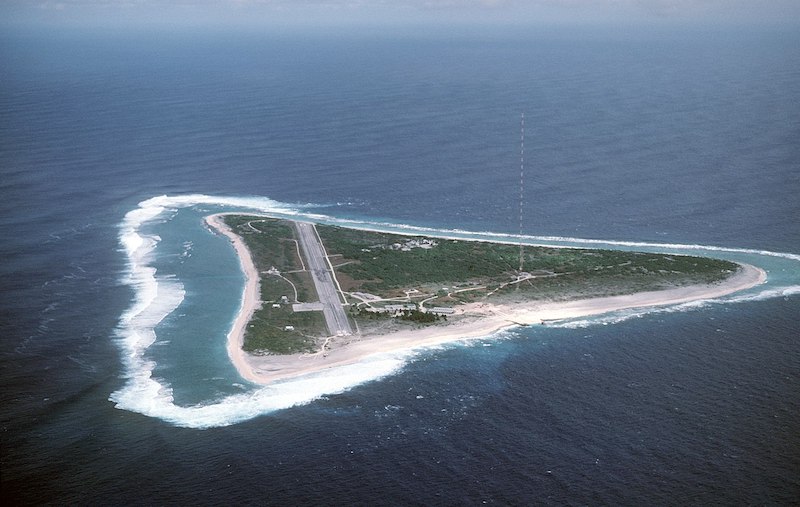SoftBank Group-backed chip designer Arm Holdings filed paperwork for its mega US initial public offering (IPO) on Monday, laying emphasis on several risks emanating from China — ranging from the country’s tech war with the West to its aim to develop its chip-making capacity.
Arm’s IPO, seeking a valuation of between $60 billion and $70 billion for the chip designer, is expected to be the largest of the year and investors hope it will bring back to life a lacklustre IPO market.
The IPO also comes at a time when China, a significant source of revenue for Arm, is engaged in a bitter trade and tech war with the West, particularly the United States, which has announced several measures to hobble the Chinese chip industry.
Also on AF: Move to Tone Down ‘China Risk’ Warnings May Spur SEC Queries
“The US and UK have trade and national security policies regarding exports to the PRC [People’s Republic of China] of technology with potential military uses that would require us to obtain export licenses for certain processors, which can be difficult to obtain,” Arm’s IPO filing said as part of mandatory disclosures of risk factors.
“The highest performance processor in our Neoverse series of processors meets or exceeds performance thresholds under US and UK export control regimes,” the filing said, detailing the export licensing requirements it faces in order to meet China demand.
“Although our inability to sell such Neoverse processor into the PRC has not had a material impact on our business to date, future restrictions on sales of our products into the PRC could have a material adverse impact on our business,” Arm’s filing said.
The filing further noted the executive order signed by US President Joe Biden to curb outbound investments in sensitive Chinese technologies, saying that once in effect, it could impact the company’s Chinese customers, suppliers, its subsidiary Arm China and business with China on the whole.
It added that increasing tensions between China and West make the company “particularly susceptible to economic and political risks affecting the PRC.”
Overall, the more than 300-page document mentioned “PRC” 130 times and “China” 222 times, including references it made to Arm China.
Arm China dependance
Arm said 25% of its total revenue came from China in its most recent fiscal year. That is broadly in line with many other companies in the semiconductor industry.
However, its subsidiary Arm China is its “largest customer individually” accounting for 24% and 18% of it total revenue in the fiscal years ended March 31, 2023 and 2022 respectively.
Arm only has an indirect 4.8% stake in Arm China, which is a separate company, but its heavy reliance on the firm adds to risks and uncertainty over its future business and operations.
Arm said it expects the licensing relationship with Arm China to account for substantially all of its total revenues from China and represent “a significant portion” of its revenues for the foreseeable future.
“It would be difficult for us to replace any lost PRC-sourced revenue in the event that our commercial relationship with Arm China were to terminate or deteriorate,” the filing said.
“If we fail to maintain our commercial relationship with Arm China, our access to the PRC market could be materially diminished and our business, results of operations, financial condition and prospects for growth could be materially and adversely affected,” it added.
China policies add to risk
The IPO filing also made note of Beijing’s policies and their potential impact on Arm’s businesses. While noting risks stemming from US trade policies targeting chip tech outflows to China, it said the Chinese government regulates the amount and timing of funds that may flow out of the country.
Those polices “have impacted and may continue to impact the timing and/or ability to receive funds generated from PRC-related revenues,” the filing said.
The documents also noted China’s efforts to build its own chip-making capacity, particularly the Made in China 2025 campaign that aims to develop 70% semiconductor self-sufficiency by 2025.
It also noted Chinese President XI Jinping’s 14th Five-Year Plan that outlines the development of companies focused on “core technologies”, particularly semiconductors, as crucial goal.
“The PRC government could encourage financing opportunities to our competitors in the PRC on favourable terms, or influence major PRC customers to favour adoption of IP of our competitors in the PRC over our own IP,” Arm said.
“Arm China may independently develop competitive products other than microprocessor cores and could divert customer interest from our products to increase its market share to our detriment,” it added.
- Vishakha Saxena
Also read:
SoftBank Seen in Talks for Vision Fund’s 25% Stake in Arm
SoftBank Set to Finally See Green as Tech Valuations Jump
Intel Looking to Become Anchor Investor in SoftBank’s Arm IPO
AI Chip Gold Rush Pumps Up SoftBank Shares Ahead of Arm IPO
SoftBank to List Arm on Nasdaq, Despite British Appeals
SoftBank’s Arm Cannot Sell Cutting-Edge Chip Designs to China
























